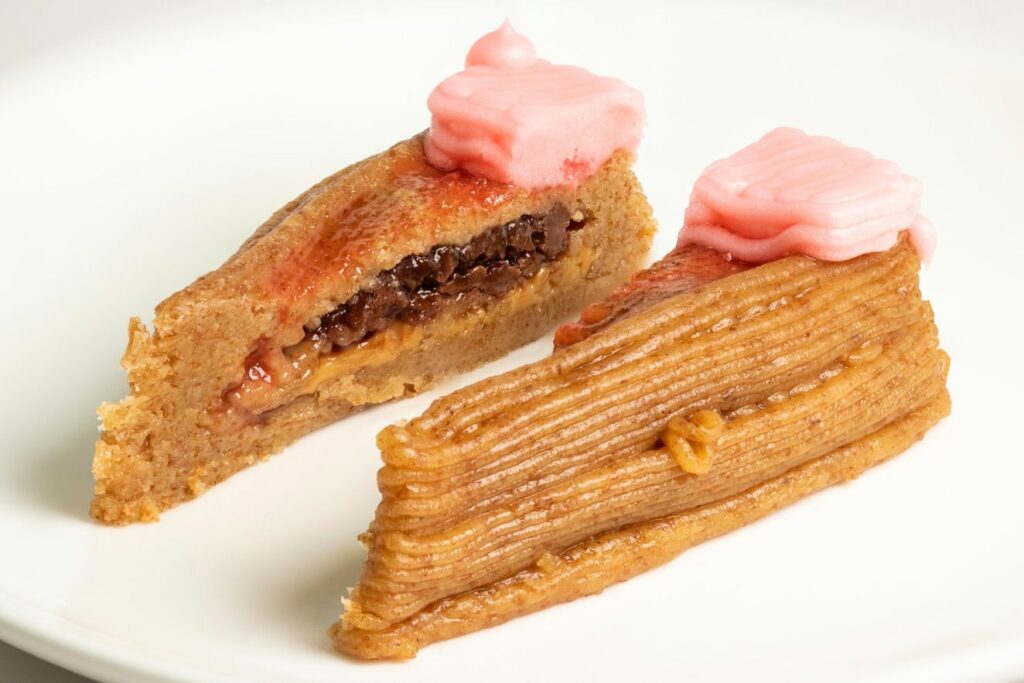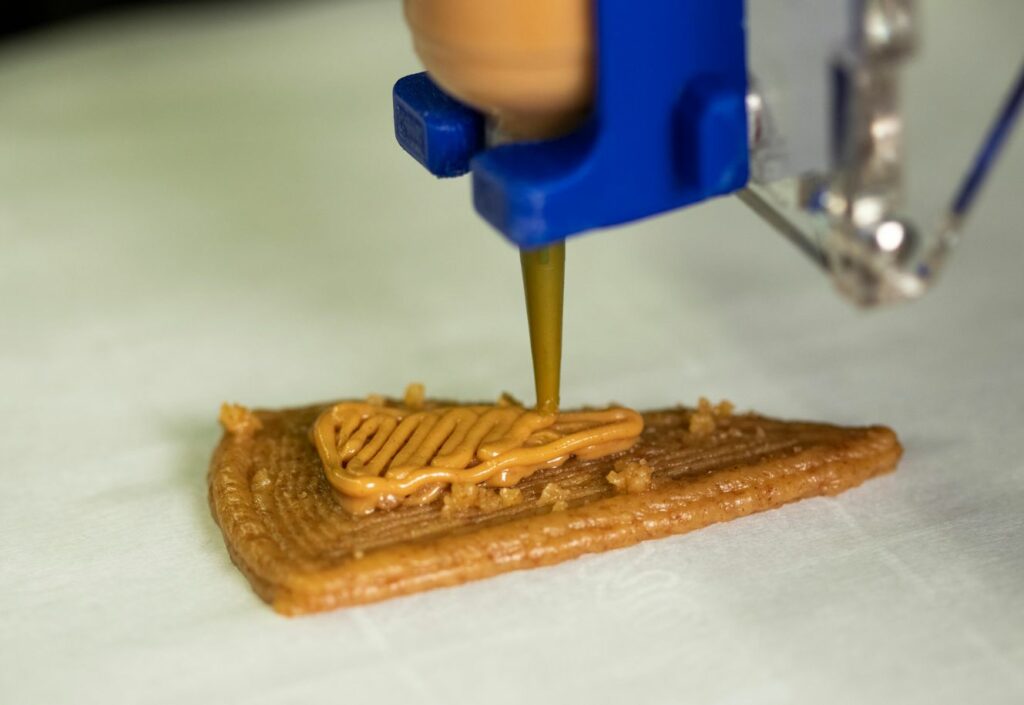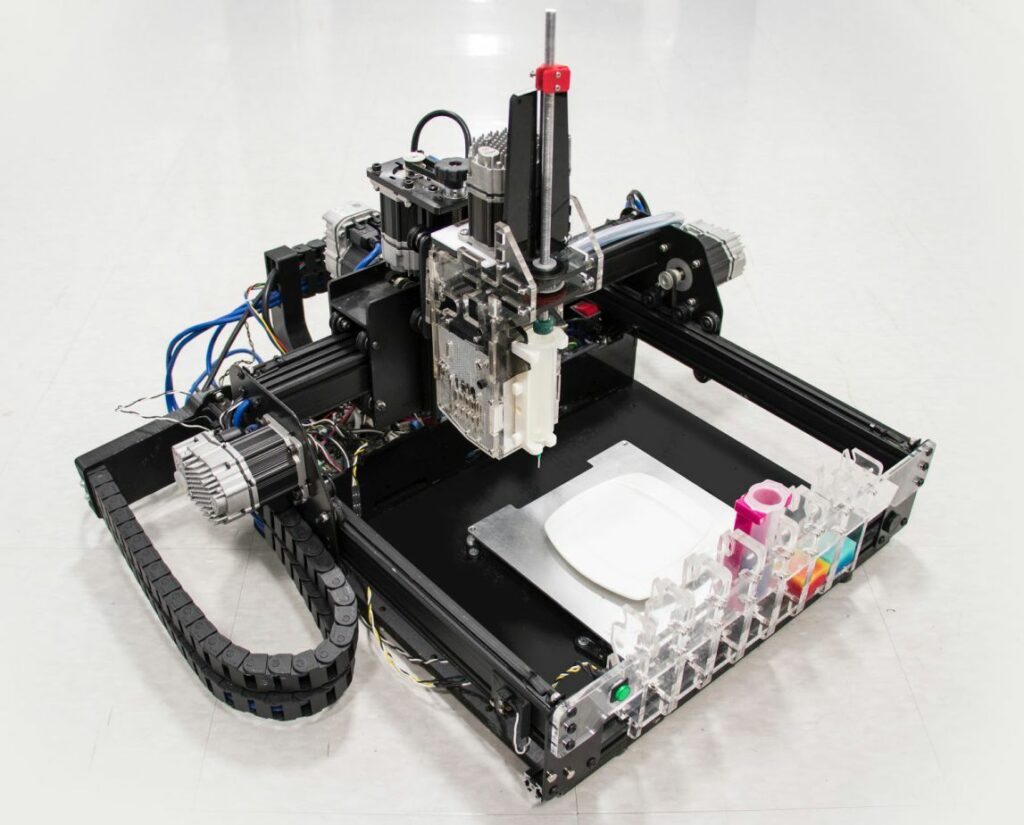Printing the future of food: how additive manufacturing can revolutionize the way we eat
The University of Ottawa researchers Ezgi Pulatsu and Chibuike Udenigwe have uncovered key factors that impact the quality of edible materials produced through additive manufacturing.
In their recent publication in Physics of Fluids from AIP Publishing, they shed light on the complexities of 3D-printing food and the challenges that must be addressed to make this technology a viable solution for global food supply and nutrition.
By understanding these factors, they hope to improve the quality and control of 3D-printed food, making it a more efficient and effective solution for feeding the world’s growing population.

The process of additive manufacturing for food requires a multi-step approach, including designing 3D shapes and their geometric codes, preparing food ink, manufacturing through the deposition of layers to create shapes, and post-processing through techniques like baking, boiling, cooking, freezing, frying, or drying.
Each step of this process offers a unique opportunity to create innovative and exciting new foods.
The texture of the food can be affected by changing the printing patterns and ingredients of the initial mix or paste, which in turn can alter the food’s matrix and microstructures. To ensure successful printing, the flow of the mix is also critical and can be influenced by controlling ingredients and process conditions.

“Extrusion-based 3D printing is the most applicable technique for food,” comments Pulatsu. “It involves a syringe loaded with a food paste – such as puree, dough, or frosting – being forced out of a nozzle by direct (pushing the plunger) or indirect force (compressed air).”
Achieving a stable and uninterrupted flow is the primary requirement for successful 3D printing of food. This allows for the creation of intricate shapes by layering string-like material in a precise and controlled manner.
“Once a layer is deposited, we no longer want it to flow; otherwise, it will destroy the shape we created,” adds Pulatsu.

After the 3D-printing process, the food undergoes post-processing such as baking, boiling, cooking, freezing, frying, or drying. These post-processing methods result in the physical and chemical transformation of the food’s micro and macromolecules, which leads to various textures and flavors. The shape of the food should be preserved or cautiously controlled during this stage.
“We also have other mechanisms of creating food structures via different 3D-printing techniques,” Pulatsu adds. “For example, material jetting uses liquid binders deposited on powder to form self-supporting layers, and liquid inks that harden after deposition can also be used.”
Establishing a printing path, which is a sequence of computer-controlled movements, could enhance the efficiency of additive manufacturing for the food industry. However, this step is frequently ignored in food applications.
“Future studies should explore the cost efficiency of different technologies in terms of build time, where shape complexity and toolpath strategies – which involve the printing path, moving head speed, and nonprinting movements – are also considered,” adds Pulatsu.
“Food is essential to living, and it’s becoming more critical due to the increasing global population and environmental changes. Therefore, novel foods and matrices should be designed in consultation with chefs, food scientists, and engineers, and in line with current needs.”
Source: 10.1063/5.0137328
Image Credit: Getty
